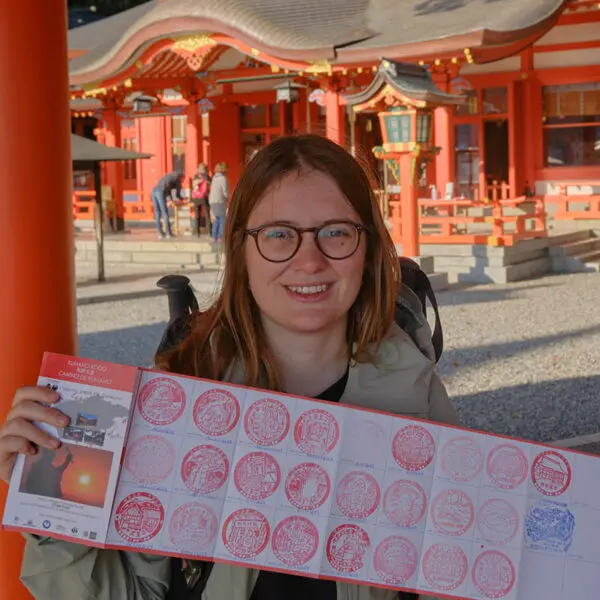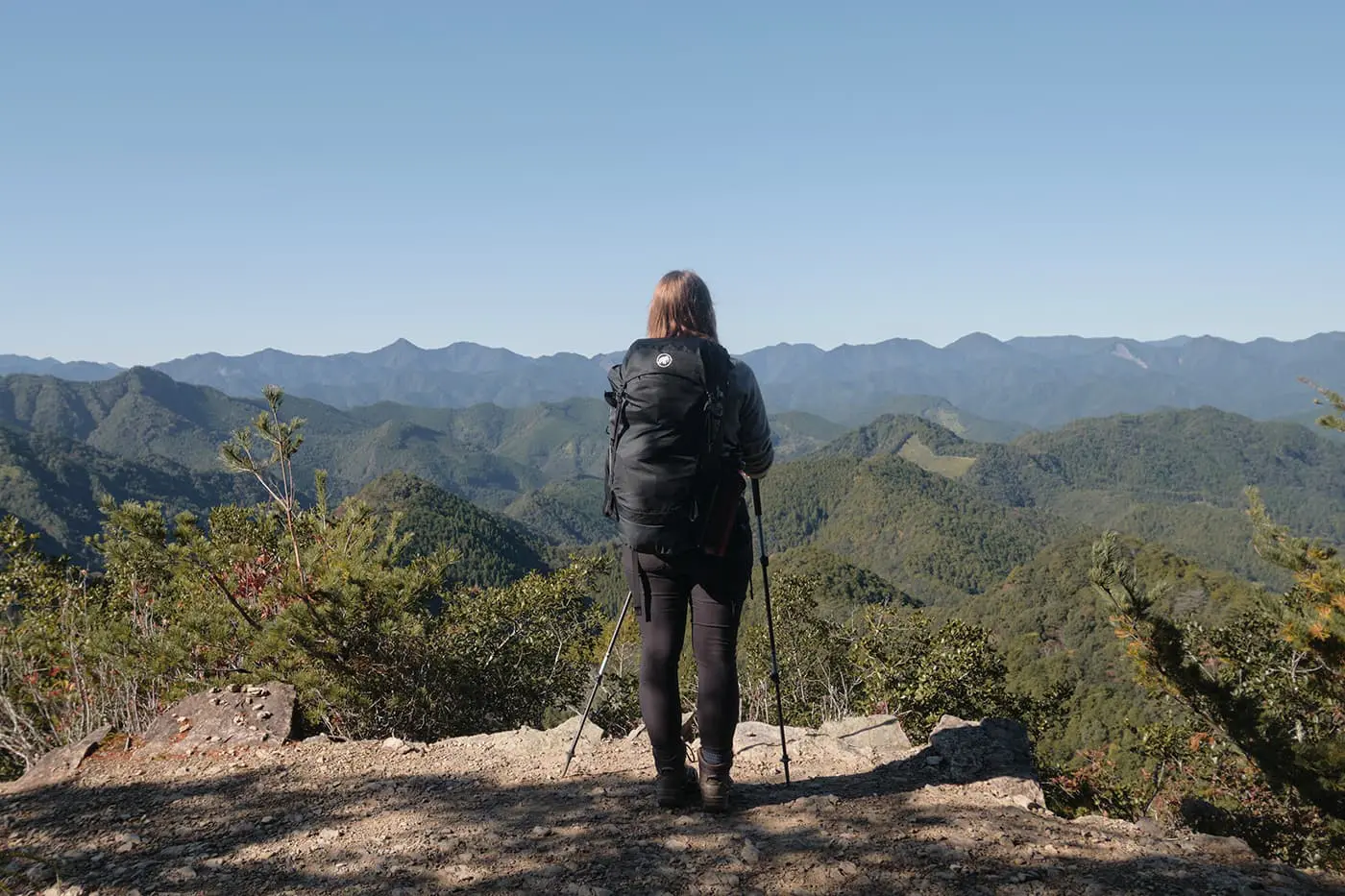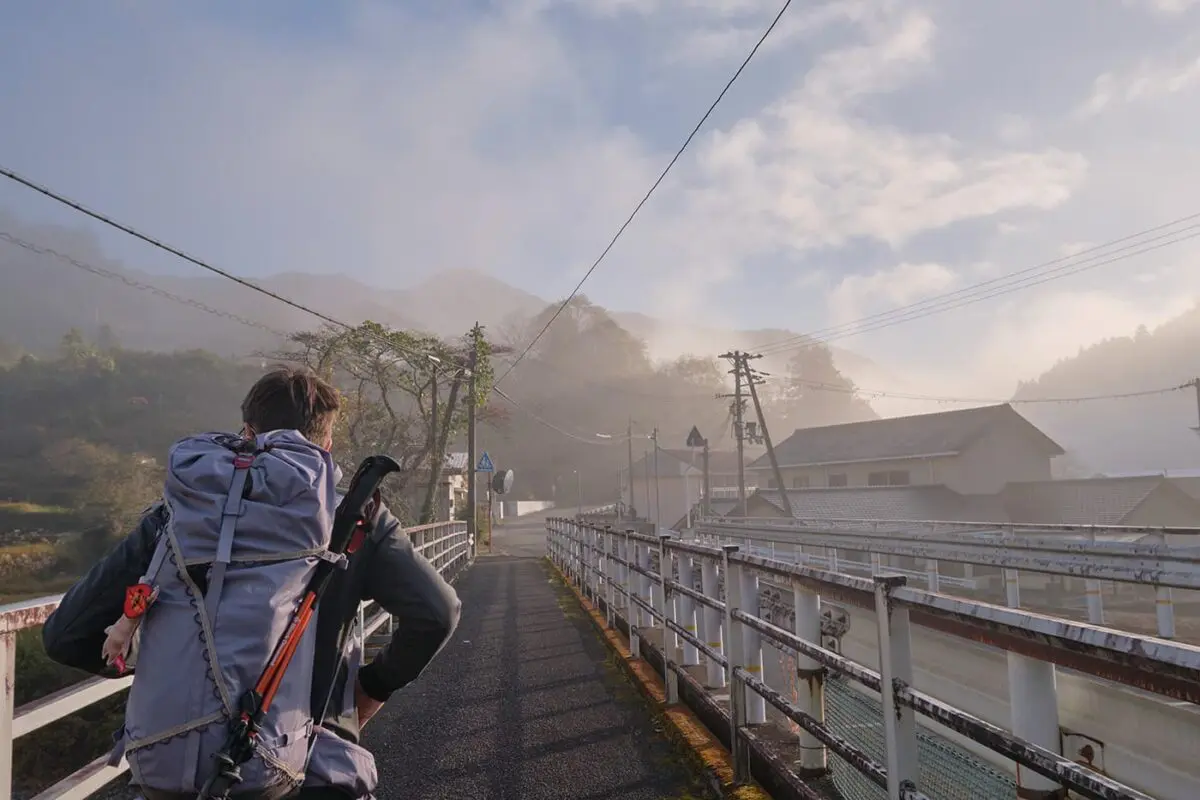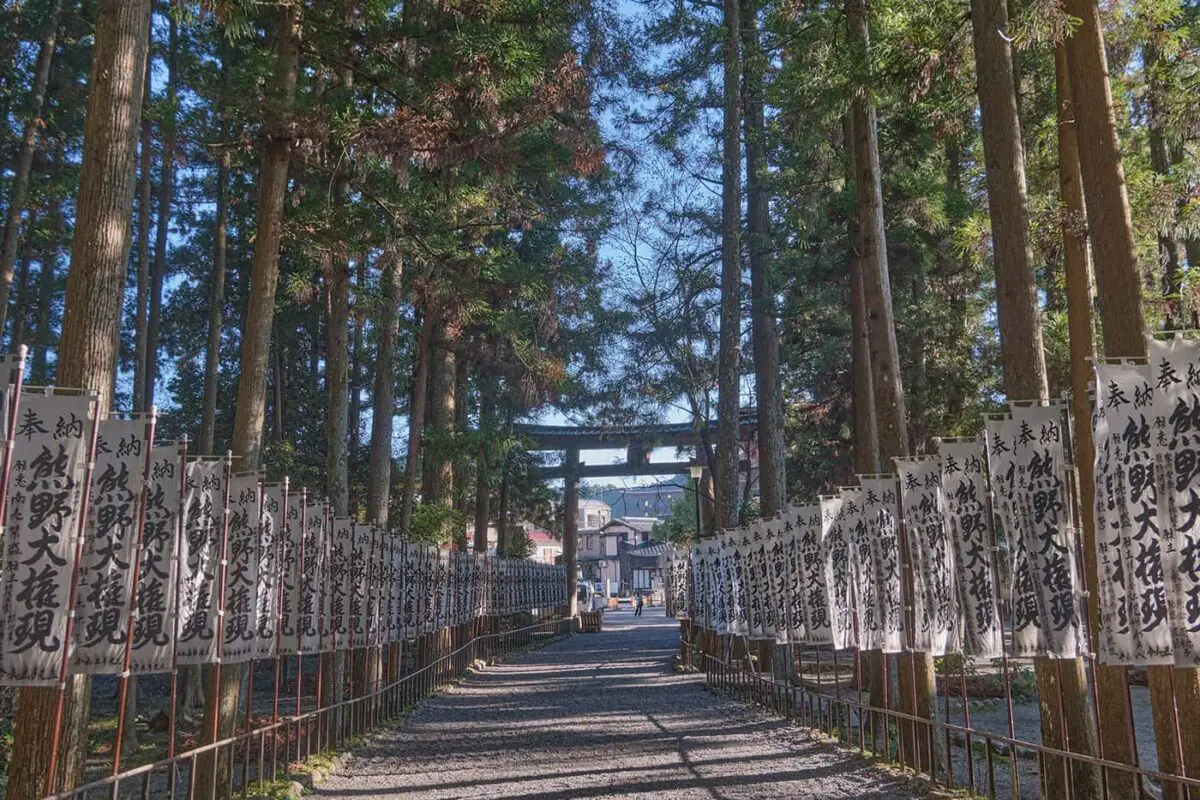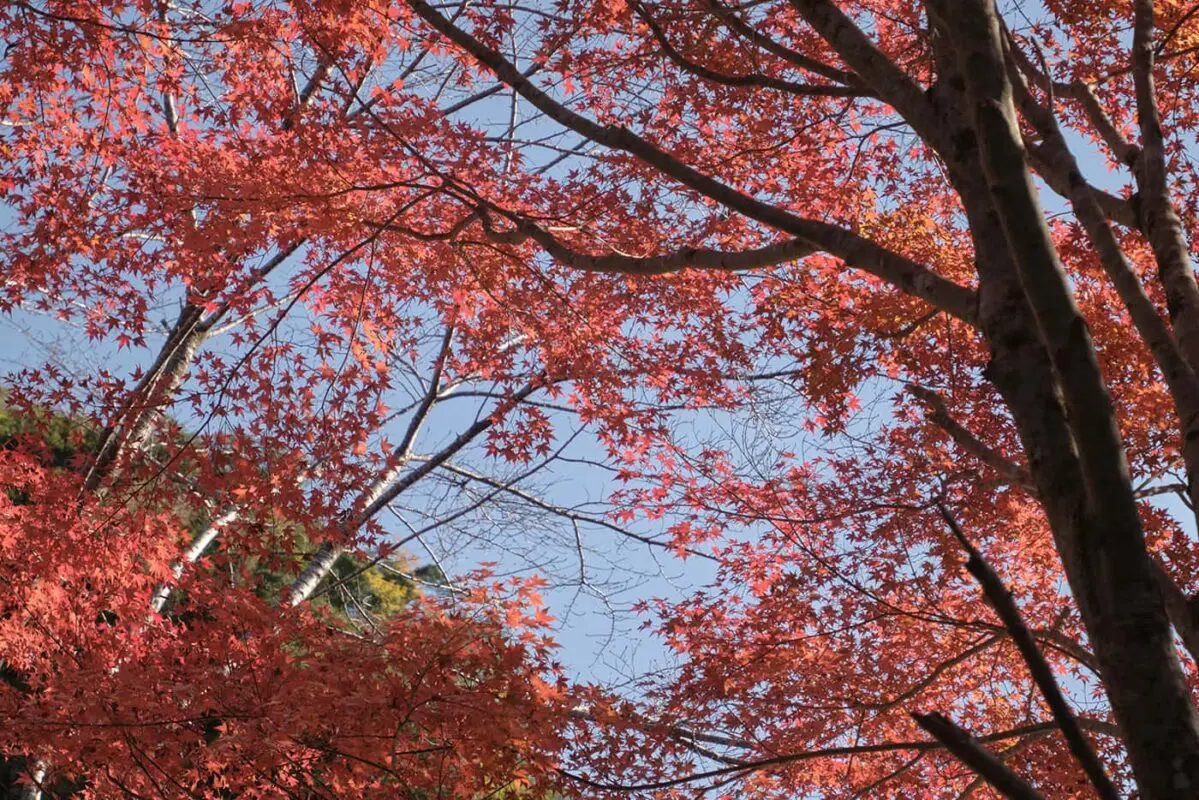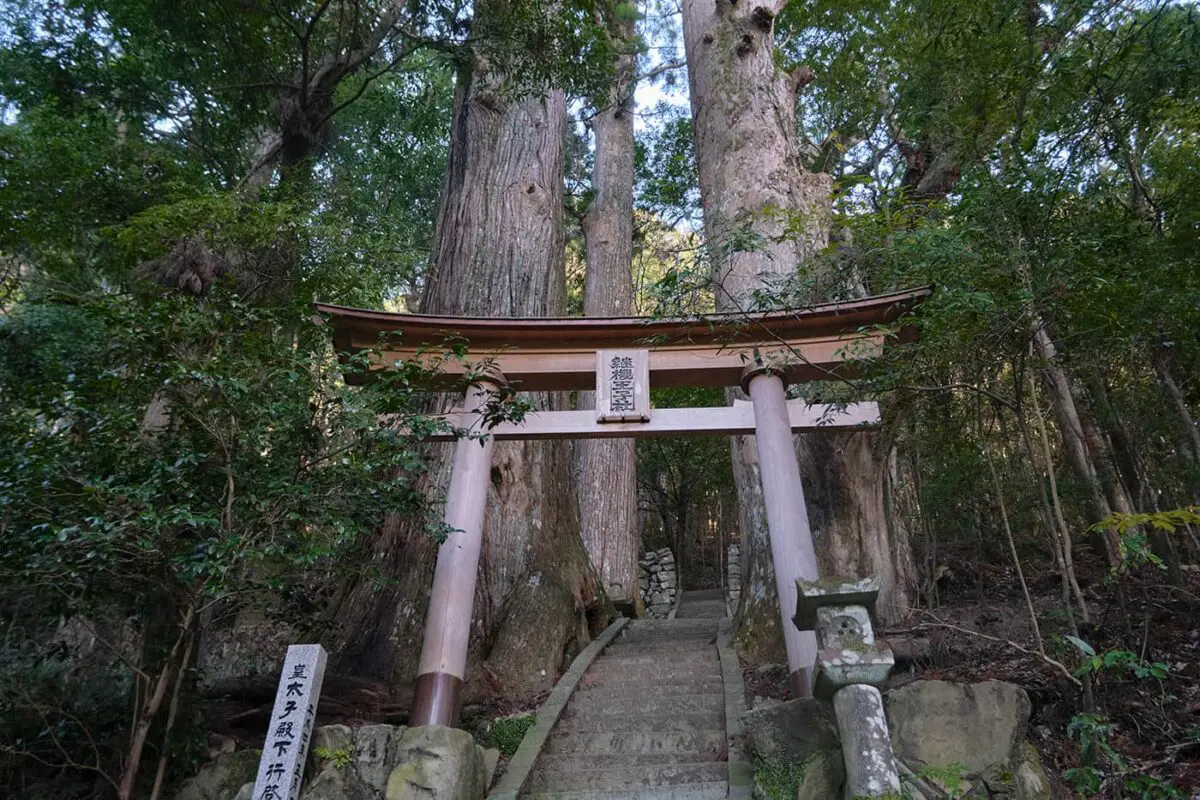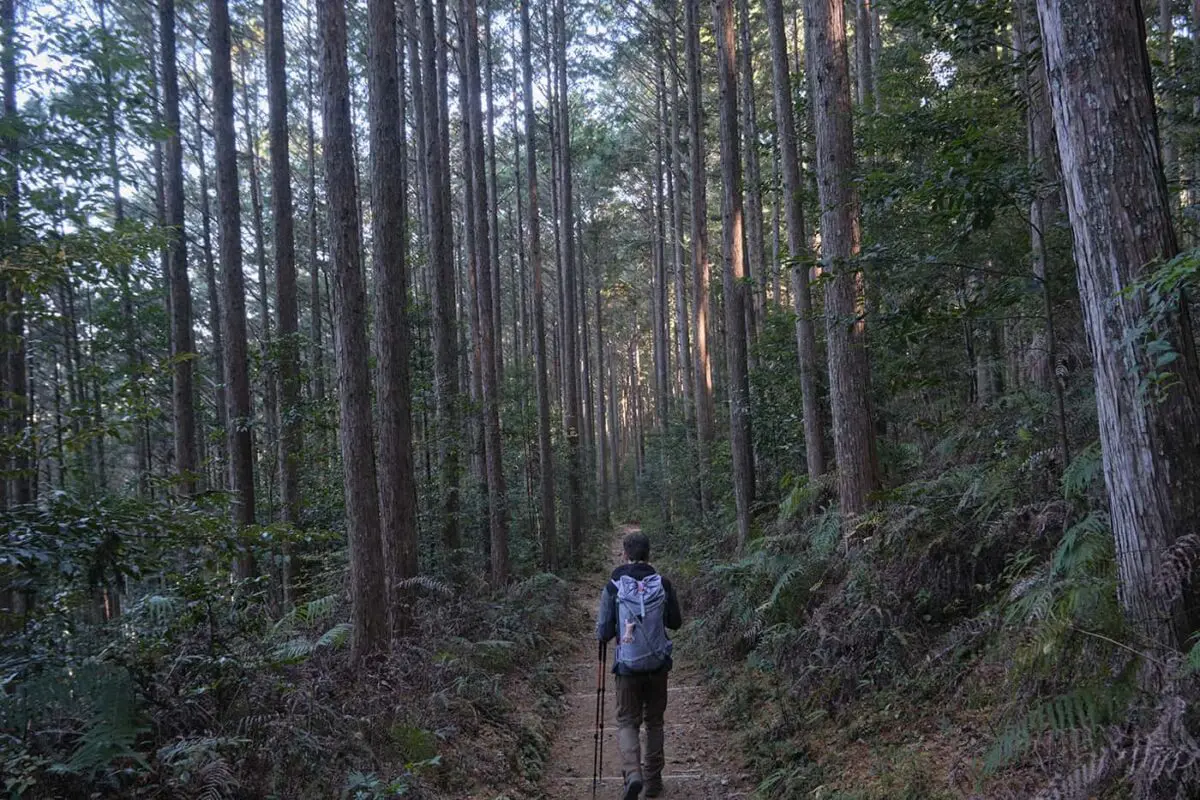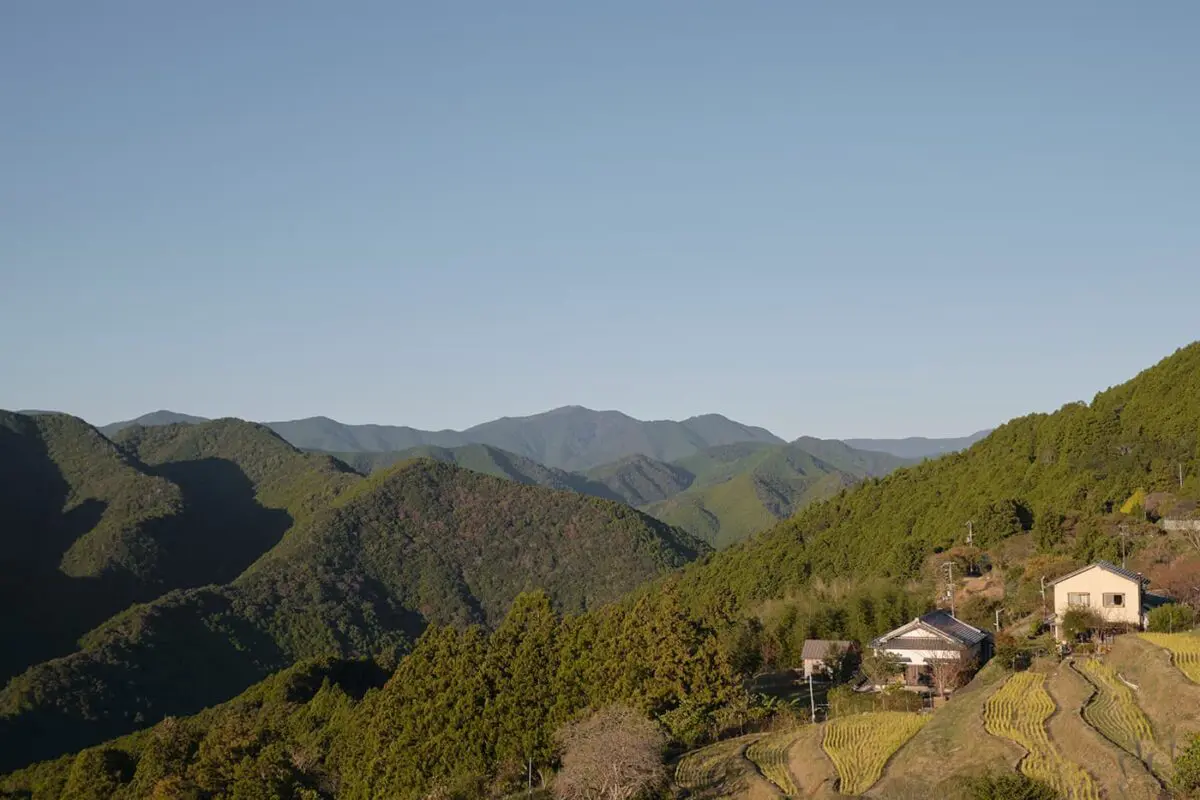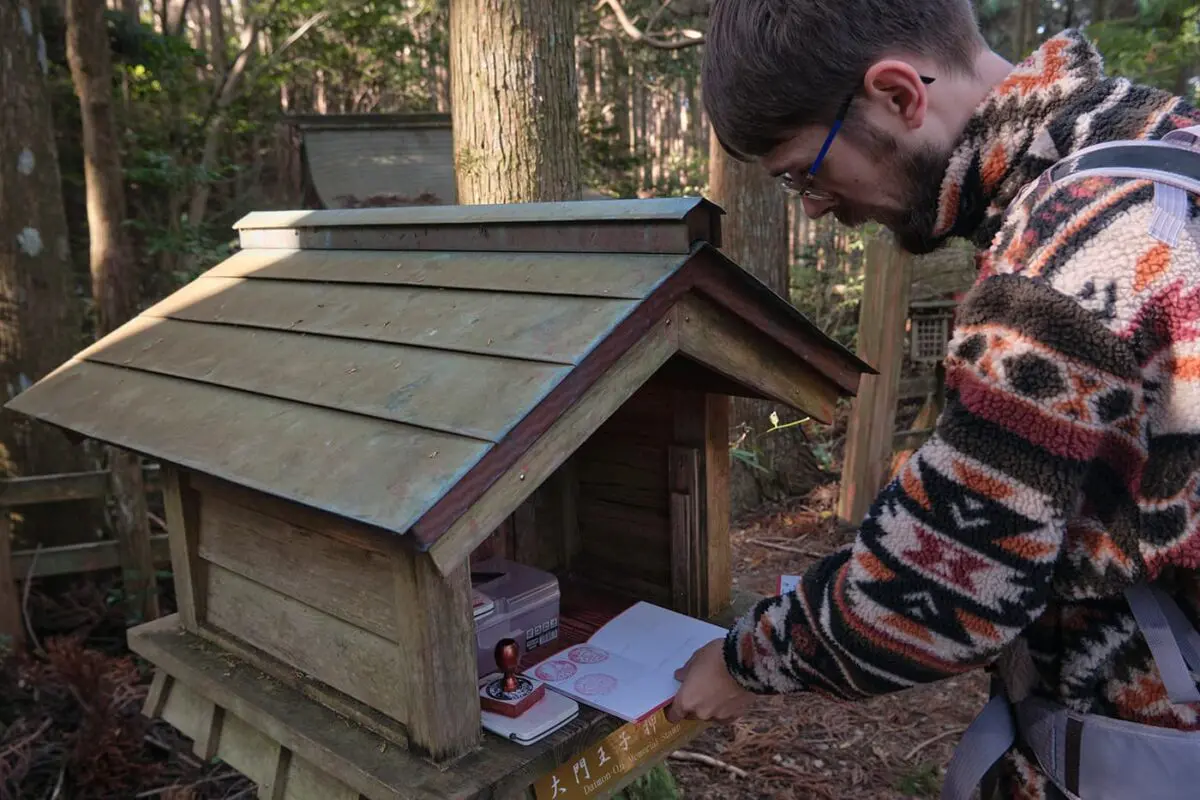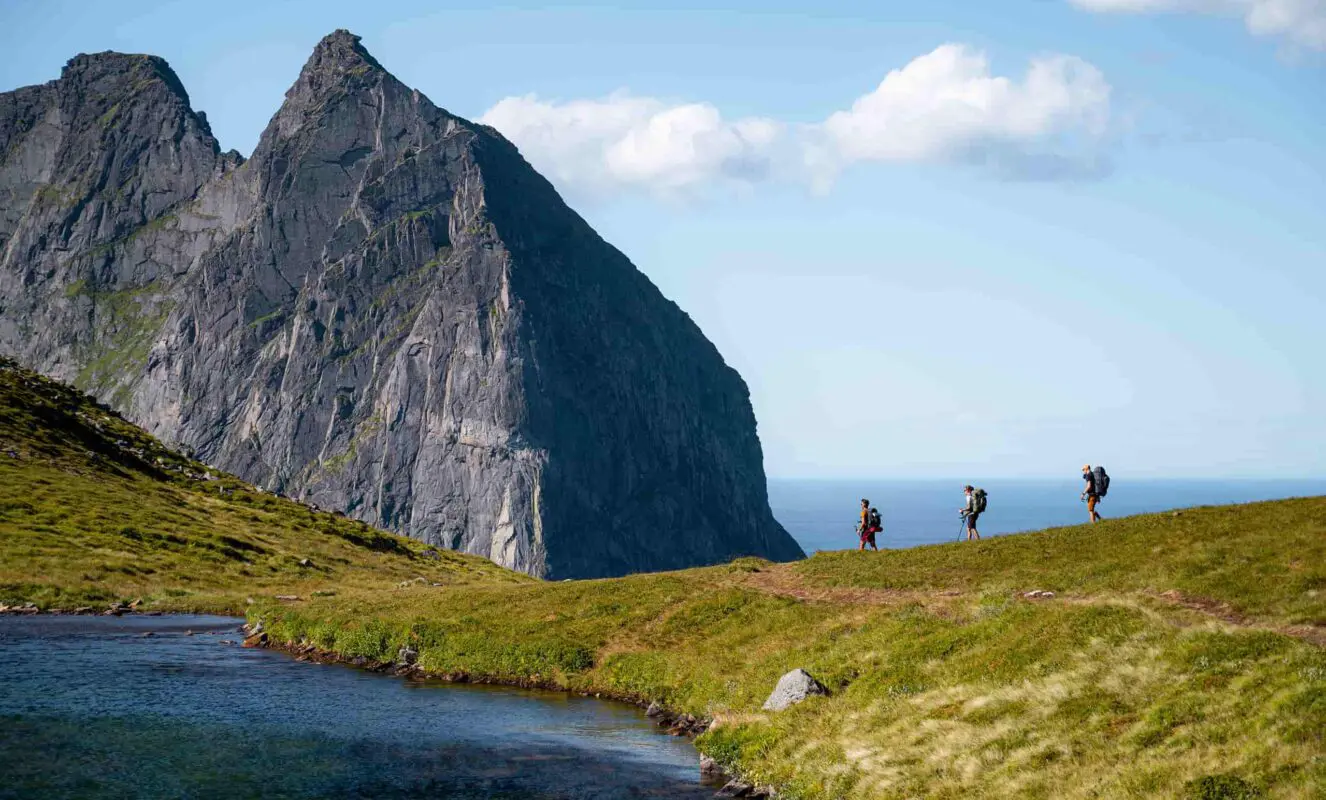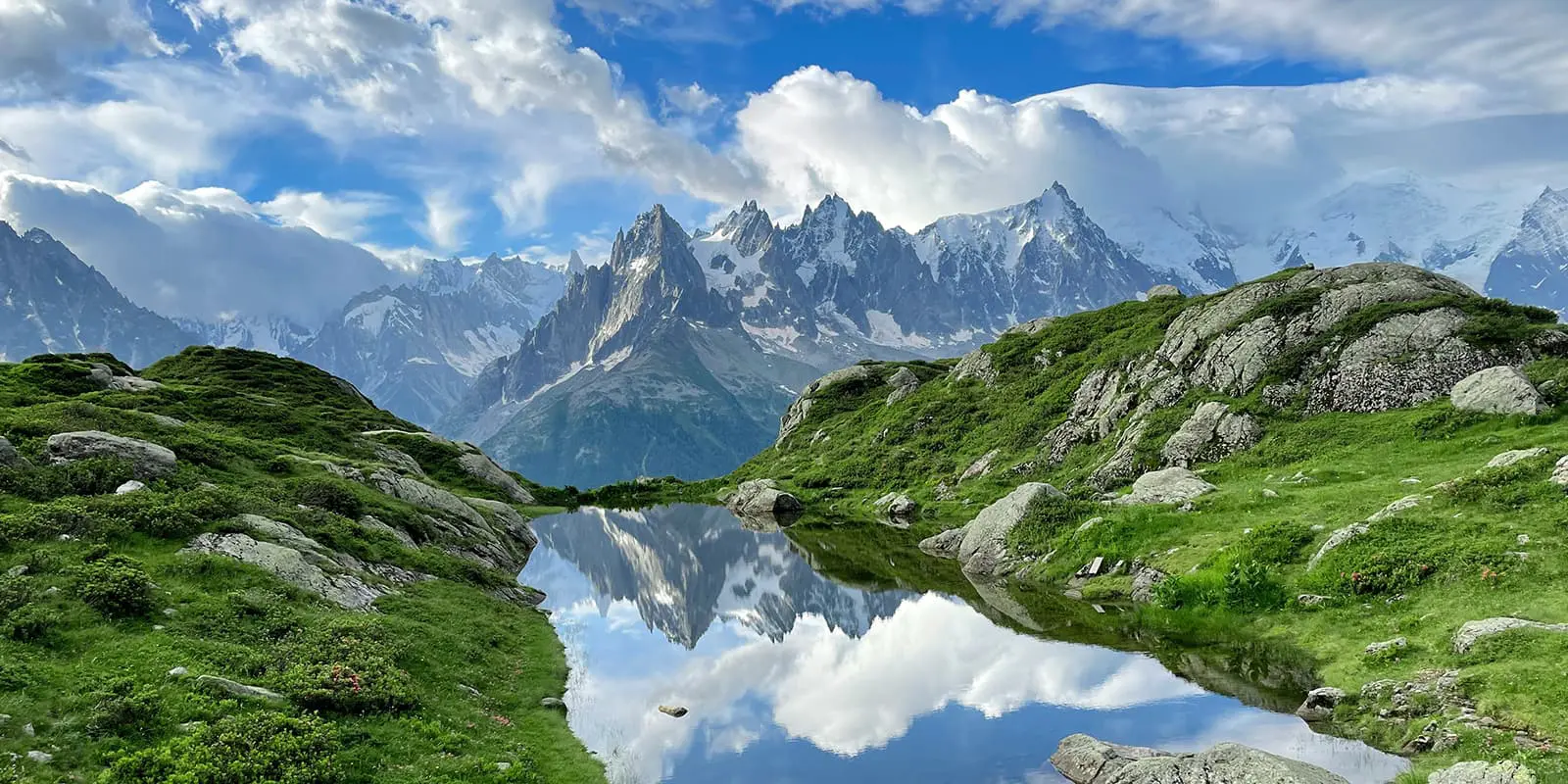The path continues by passing multiple smaller villages. Make sure to also make a brief stop at Tsugizakura-Oji, a beautiful subsidiary shrine with massive cedar trees (some with a circumference of 8m and up to 800 years old), and at Nonaka-no-Shimizu spring (the water claimed to be pure enough to directly drink it from the source). The trail then follows a bigger, paved road for a few kilometers. If desired, the paved part can be skipped by taking a bus.
After a beautiful but intense climb through forests and with amazing views from mountaintops, the trail arrives at Hosshinmon-Oji, the outermost entrance to Kumano Hongu Taisha Shrine that can be reached by descending through incredible bamboo groves (don’t miss the look-out point along the way). Hongu Taisha Shrine is one of the most important grand Shrines of the Kumano Kodo since all pilgrimage routes pass this shrine. Make sure to also visit Oyunohara on the other side of the street, this is the original site of the shrine and is known for its Otorii (the biggest torii gate in Japan). A bit further down the street Kumano Hongu Heritage Center is located where you’ll find various exhibitions and tourist info.
After following the paved road to the Ukegawa trailhead (that once again, can be skipped by taking the bus), the trail climbs through the forest to Hyakken-Gura, a lookout point with a view over numerous peaks of the Kumano region. After admiring this incredible view, the trail descends to the valley and a river before arriving at Koguchi, a little village where it’s possible to buy extra snacks and drinks.
The last stage starting from Koguchi is claimed to be the hardest of the journey with lots of elevation and no facilities along the way. This section is famous for its Dogiri-Zaka or the body-breaking slope, an 800m elevation gain over 5 kilometers. After ascending, one will be rewarded with the Funami-Toge Pass, a Pacific ocean view, perfect for a picnic. After descending through the forests and passing a park the trail finds its ending point at Kumano Nachi Taisha. A grand shrine famous for its sacred waterfall.




